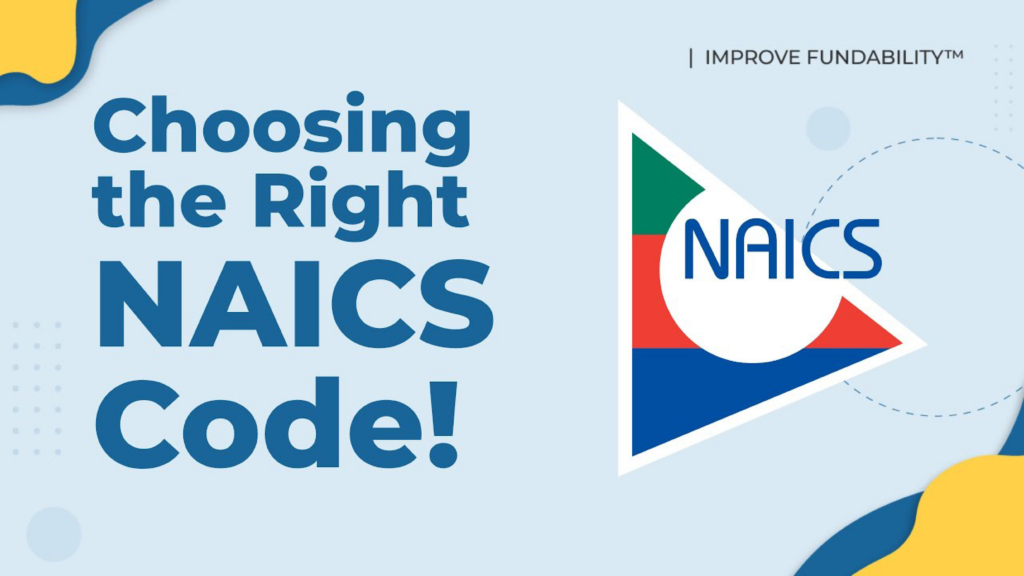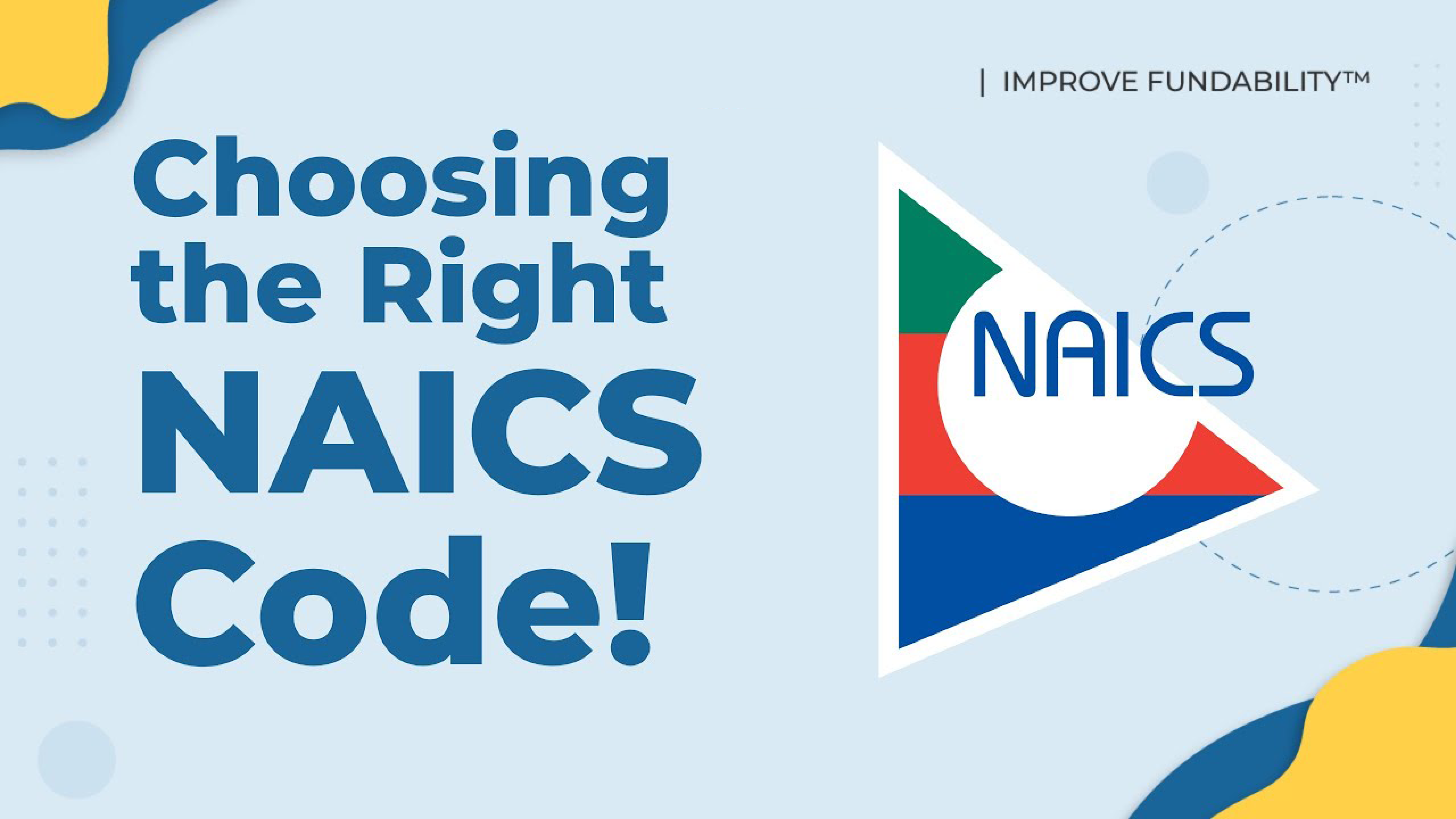
You may have heard of NAICS codes and SIC codes. And you may also have heard about how they can mark your business as low or high risk.
Today, let’s look at choosing the best NAICS code for you and how to do so easily. Since SIC codes are on their way out, we won’t look at them. But the principle is the same.
It’s a question of risk. More on that in a moment.
The Best NAICS Codes List (Low-Risk Industries)
Starting a business that’s considered low-risk can greatly improve your chances of securing funding.
More than that, making sure you choose the right NAICS code (the correct NAICS code, not just one that suits your funding needs best) is essential to how your business is perceived.
There are multiple NAICS codes that could apply to a business. One may be a low risk NAICS code while certain NAICS codes could represent high risk industries.
Banks may avoid high-risk industries in the United States. For example, if you’re in the information sector and process data (collected from necessary cookies or analytics cookies, necessitating a privacy cookies policy), you may encounter more resistance when trying to fund your business.
We’ll explore what constitutes a high risk NAICS code further down.
But with that in mind, which businesses should you pursue, or what classification code should you use? Which NAICS codes carry the lowest risk and appeal to lenders?
Here are some of the best NAICS codes for low-risk industries to use for your business or focus on building a business around.
- 541611: Administrative Management and General Management Consulting Services
- 541810: Advertising Services
- 812112: Beauty Salons
- 624410: Child Day Care Services
- 518210: Data Processing, Hosting, and Related Services (like business intelligence)
- 611710: Educational Support Services
- 541330: Engineering Services
- 713940: Fitness and Recreational Sports Centers
- 621610: Home Health Care Services
- 541612: Human Resources Consulting Services
- 531312: Nonresidential Property Managers
- 541211: Offices of Certified Public Accountants
- 621310: Offices of Chiropractors
- 621210: Offices of Dentists
- 541110: Offices of Lawyers
- 621111: Offices of Physicians (except Mental Health Specialists)
- 459910: Pet and Pet Supplies Retailers
- 238220: Plumbing, Heating, and Air-Conditioning
- 531311: Residential Property Managers
- 624000: Social Services (social assistance)
- 445110: Supermarkets and Other Grocery Retailers (except Convenience Retailers)
- 523991: Trust, Fiduciary, and Custody Activities
High Risk NAICS Codes List
Choosing the wrong code could end up costing your business and get you labeled as high-risk. This could directly impact your insurance premiums. It could affect your financing ability, even your credit limit recommendations. This small error of selecting the incorrect code could have a big impact on your business in the future. Always do your research before choosing.
Now that we’ve covered low-risk NAICS codes, which industries throughout North America are considered higher risk?
Whether you’re starting a business in New York or California, here are some examples of industries considered to have high risk NAICS codes.
Restricted Industries (automatic decline):
- 332992: Ammunition or Weapons Manufacturing; wholesale and retail.
- 522110: Finance; Federal Reserve Banks, foreign banks, banks (money transfer, consumer loans, etc.), bank holding companies
- 713290: Gaming or Gambling Activities
- 459510: Pawn shops
- 813940: Political campaigns, candidates, or committees (92 or public administration or a similar government agency may be considered a high risk industry)
- 711510-26: X-rated products or entertainment
High-Risk Industries (subject to stricter underwriting guidelines):
- 54151: Computer and software related services.
- 812300: Dry cleaners
- 710000: Entertainment (adult entertainment is considered restricted).
- 236115: General contractors
- 447110: Gasoline stations or convenience stores (also known as c-stores). (If your primary NAICS code is related to other energy services, you may also face difficulties due to volatility, changing government contracts and federal regulations, revised policies, and more.)
- 623100: Healthcare; specifically nursing homes, assisted living facilities, and continuing care retirement centers.
- 721110: Hotels or motels
More High-Risk Industries
- 423940: Jewelry, precious stones, and metals; wholesale trade and retail
- 485320: Limousine services
- 484121: Long distance or “over-the-road” trucking.
- 531210: Real estate agents/brokers
- 237210: Real estate developers or land sub-dividers
- 722000: Restaurants or drinking places.
- 561510: Travel agencies
Some Background
The North American Industry Classification System has industry codes to define establishments based on what they do most of the time. The codes sort businesses to gather, analyze, and then publish statistical data on the US economy.
For example, if your company is a salon, the code might be 812112, which is for beauty salons. But that’s not quite right if you have a nail salon, which should use 812113 instead.
For salons, there are only a few possible codes, corresponding to various services. A salon offering services for hair, nails, and permanent makeup could choose from three codes.
Which Coding System Do Banks and Business Credit Reporting Agencies Use?
Lenders, banks, insurance companies, and business CRAs will use an SIC code and NAICS codes. They want to see if your business is in a high-risk industry. So you could get a denial for a loan or a business credit card based on your business classification. Some codes can trigger automatic turn-downs or higher premiums. Or your business might receive reduced credit limits.
The IRS will use the code you pick, to see if your business tax returns are comparable to other businesses in your industry. If your tax deductions do not reasonably resemble other businesses in your industry, your business could be subject to an audit.
Furthermore, some companies get a high-risk label when they do not choose the right code. But if you get how the classification system works, then you can choose the right business NAICS code on your first try.
If you need to translate codes, you can always use a NAICS crosswalk tool for your specific industry.

CLICK HERE TO SCHEDULE A FREE CONSULTATION
Avoiding High Risk Codes
The riskiest businesses tend to be cash-intensive. Or they can be businesses with a higher chance of personal injury or property damage.
The NAICS keeps a list of high-risk and high-cash industries. Industries on the list include casinos, pawn shops, and restaurants. Before you choose a code, look over the list.
But keep in mind, that list of high-risk and high-cash industries is from 2014 and may be incomplete or even out of date. Per the NAICS, there are no plans to update it at this time.
OSHA also requires injury and illness reports from certain high-risk industries.
None of the three salon codes are on the list. But this doesn’t mean they shouldn’t be. After all, salons harbor any number of hazards. Wet floors from dripping towels can make a floor slippery. Curling irons and hair dryers are sometimes too close to wash basins. Shampoos, dyes, and nail polish remover can cause allergic reactions. And a rough masseur can injure a customer’s back.
But the other side of the risk coin is occupations which are cash intensive businesses. A pawn shop might not have much of a specific risk of injury at all. But the large amounts of cash normally associated with one mean that it’s a tempting target for thieves.
More Reasons a Business May Be High Risk
Experian in particular tends to mark certain industries when they aren’t cash-intensive. And they have no physical plant where anyone can get hurt (such as is the case with purely online businesses). So, what gives?
There are a few reasons why a certain SIC code or NAICS code will be considered high-risk.
- Traditionally late-paying industries and/or a high risk of payment default. For example, single family home builders in the late 2000s were going bankrupt, and considered a high risk for extending credit.
- Industries with a low barrier to entry. There may not be an education requirement, or maybe no licensing is necessary. There may not even be any regulations governing the industry. As a result, people go into these businesses who really don’t know what they’re doing. Hence they can go out of business just as easily as they go in. Think of the number of consultants and life coaches you see these days, maybe even among your friends. Often, those businesses don’t stick around. Even if they do, if the industry is so glutted, they might not make too much money.
Conducting a NAICS Code Search
Here’s how to get a code for your company:
- Go to naics.com for the NAICS code list (This can also be found with the U.S. Census Bureau)
- Use the NAICS search function and their business activity code lookup
- Select the NAICS number with the closest fit—if there is no good fit, expand your search. Also, click on the code name to open it for more information
Can You Perform a NAICS Code Lookup by Company Name?
Yes, you actually can. Keep in mind, it’s not exactly a list of companies by NAICS code. Which makes sense, as the NAICS would probably prefer selling something like that. However, if you go to the NAICS Company Lookup Tool, you get a few options.
You can look up a company if you have their name and ZIP code, or you have their name and D-U-N-S number, or their name and complete address.
As a result, I was able to look up Apple’s NAICS codes (their headquarters in Cupertino, California has a ZIP code of 95041. Hence if you were Tim Cook, and were asking, “What is my NAICS code?”—that would be how you would get it. But they won’t let you conduct more than one search without paying.
You can even use this in your marketing strategy, looking up tools and then leveraging an SIC code appends for better B2B business intelligence.
Choosing a Business Code: Back to Our Example for a Moment
For our salon example, it’s hard to say which code is best. Chances are they are all equally risky. Of course, you want to be honest when picking a code. But if more than one code could apply, it’s okay to choose a code that will not get you denied by lenders.
If you make your own conditioner and the like, that may turn out to be a better code, 325620. That way, you may be able to still operate your real salon business without being considered risky.
A better code can be the difference between business funding—and no funding. Make sure you’re considering this alongside other factors like your credit score, earning potential, and beyond.
But Does Risk REALLY Matter That Much?
It matters less than you may think. If traditional lenders say no, then it’s time for some internet sleuthing to seek out other financial institution options. A quick Google search for business loans for salons pulls up over seven million hits. You don’t have to get money from a traditional lender.
But check a few things, e.g.:
- Do they lend to independent salons or just to larger franchises?
- What does the Better Business Bureau (and related posts from trustworthy sources) say about them?
- Is your local Chamber of Commerce and/or industry association familiar with them? If so, what do they say?
And then proceed as you wish. If you’ve found a reputable lender and they don’t care about your SIC code and/or NAICS codes, then the codes kind of don’t matter….
Codes and Fundability™
Your NAICS code is a part of the calculus of fundability™ of your business. Low risk NAICS codes will tend to be better. But if your business has several other positive fundability™ factors, the code matters less. A well setup business with $2 million in sales every month should be able to get money no matter what their code is.
Noel A. Booker Sr.
BusinessCreditBuilder.us
404-500-9687
noel@businesscreditbuilder.us
